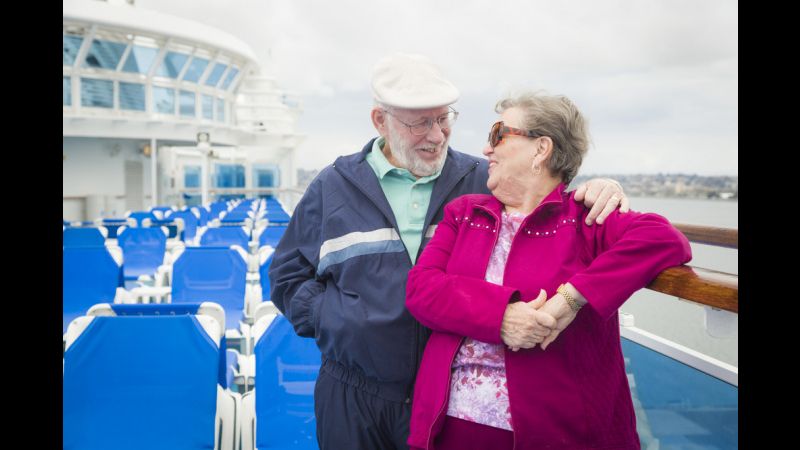Out of all the summer travel options for seniors, cruises have become one of the most popular vacation getaways. Cruises may be a great senior travel option, but that doesn’t mean you should disregard your safety while on board the ship. These tips for cruising will help you travel safely – no matter your destination.
Why Choose a Cruise?
Ease of travel is probably the biggest reason why cruises have become popular among seniors. Cruises allow seniors to visit multiple places without having to change rooms, and passengers of all ages can enjoy the endless food and entertainment choices available.
The key is finding the best cruises for seniors. Some offer special accommodations for medical conditions, including amenities for those who are vision or hearing-impaired, oxygen for those suffering from pulmonary diseases and dialysis for people with kidney failure. Plus, many cruise lines provide discounts for seniors, making cruises a much more affordable travel option if you’re over 65.
Your Cruise Safety Checklist
No matter what your destination is, it’s important to remember these tips for cruising safely from AARP:
1. Do your research first.
To find the absolute best cruises for seniors, it’s important that you do your due diligence before booking your trip. As part of the Centers for Disease Control and Prevention’s Vessel Sanitation Program, ships are inspected for cleanliness, water quality, food preparation and other qualifications. You can search for a cruise ship’s sanitation record here. A simple Google search of a cruise ship will also tell you if it’s been involved in any recent accidents or health/safety concerns.
Before setting sail, you should register your name in the U.S. Department of State’s Smart Traveler Enrollment Program. This free service allows officials to help you should you experience an emergency when traveling overseas. If you have a travel agent or a travel insurance provider, be sure to keep that information with you as well.
2. Pay attention to the safety drill.
An emergency is the last thing any of us want to happen while on vacation, but the reality is that emergencies can happen anywhere – even on a cruise ship. All cruise ships hold a safety drill on the first day, and it is mandatory for all passengers to participate.
During the safety drill, find your lifejacket and make sure it fits properly. The big letter on your lifejacket tells you your assigned muster station, and it’s important to pay attention to the crew’s instructions. We’re sure you’d rather be relaxing by the pool or exploring the ship, but should an emergency occur, you won’t regret having paid attention to this important information.
3. Be aware of your surroundings.
Staying alert is essential for staying safe on any vacation, and this is especially true when cruising. Depending on the size of the ship, cruise ships can be very confusing. If you are not given a map when you board the ship, pick one up at the purser’s office. Study the ship’s layout, and keep the map with you in case you lose your way.
4. Remember: your safety comes first.
Cruises are fun, but remember to put your safety first when enjoying the various activities aboard the ship. Crew members look out for every passenger’s safety, but it’s important to remain alert and aware of your surroundings and limitations. Always travel with someone as you move about the ship, and be sure to report any suspicious behavior to a crew member.
It’s also not uncommon to run into some slippery walkways while roaming the ship. To avoid a fall and injury, wear sturdy shoes with non-slip soles. As an added bonus, depending on where you decide to cruise, you may be able to bring your Medical Guardian medical alert device with you. Our medical alert systems can travel anywhere within the U.S.


